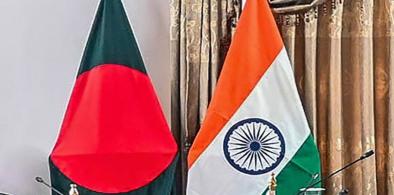Make in India in defence manufacturing: Significant initiatives but still a long way to go
In recent years there has been a paradigm shift in the manner in which the government is bringing about significant policy measures to make India self-reliant and instituting mechanisms to overcome bureaucratic bottlenecks which had plagued the system for long

As India achieves the significant milestone of completing 75 years of Independence, it is instructive to review the growth of its defence manufacturing sector and what the future holds. India, since August 1947, has had to face two belligerent neighbours, leading to three major wars, border conflicts and skirmishes.
There is a constant live threat on our borders, especially along the Line of Control (LoC) with Pakistan, which has now extended to the Ladakh region. This challenging environment makes it imperative that the Indian Army has the necessary wherewithal by way of weapon systems and equipment and here self-reliance is the key.
As independence dawned, India’s defence manufacturing capability was based mainly on 18 Ordnance Factories. Interestingly, the first of these factories were set up in 1787 at Ishapore (later Rifle Factory), West Bengal and in 1801 a Gun Carriage Factory was set up in Cossipore, near Kolkata. Since 1947, 22 more factories have been added for manufacturing a vast range of items, ranging from ammunition, guns, tanks, clothing etc. These factories are totally under Indian government control.
Subsequently, envisaging the need to build our own domestic defence manufacturing capability, Defence Public Sector Undertakings (DPSUs) like Bharat Electronics Ltd (1954), Bharat Dynamics Limited (1970) and Hindustan Aeronautics Ltd (under Ministry of Defence since 1951) were set up. Research and Development in the defence sphere received due importance through the setting up of the Defence Research and Development Organization (DRDO) in 1958, which today comprises of over 50 laboratories engaged in developing cutting-edge defence technologies.
Development of military systems
The establishment of DPSUs, DRDO and increasing the number of Ordnance factories set the stage for the development of weapon systems for the Army. The need for domestic manufacturing received further impetus due to the three wars that India had to fight, which made the Government realise the strategic and operational constraints posed due to heavy dependence on foreign arms and ammunition. Although the private industry was involved in the manufacture of spare parts and subsystems, these remained mainly an ancillary effort and major weapons system development and manufacture remained the responsibility of government establishments.
One of the first major weapon systems to be designed and developed by the emerging defence ecosystem was the 105 mm Indian Field Gun (IFG) and its variant, the Light field gun (LFG), along with ammunition.
The advent of private industry in major weapons system development came about with the induction of Pinaka multi-barrel rocket launcher in 2000. This system was designed and developed by the DRDO, with private companies as well as Ordnance factories contracted to manufacture the launchers and ammunition. Interestingly, the Pinaka system continues to be improved upon with close collaboration between DRDO, ordnance factories and private industry.
It will be a matter of great pride for all stakeholders in the defence manufacturing sector, when, on our 75th Independence Day, the traditional ceremonial 21-gun salute will be delivered by the indigenously developed Advanced Towed Artillery Gun Systems (ATAGS). This 155 mm artillery gun has successfully completed all field trials in May 2022 and is set for induction in the Army. This will provide a tremendous fillip to our ongoing modernization of the artillery. The induction of ‘Arjun’ Main Battle Tank and Akash Air Defence system are other examples of indigenous development and collaborative effort.
There is an ongoing pragmatic assessment of the need to fulfil the Army’s immediate concerns, which cannot be delayed. Therefore, wherever necessary, in parallel with indigenous development, procurement of weapons systems is undertaken. However, the stress is more on carrying out domestic manufacture of these systems for developing the necessary infrastructure for long-term sustainment. One such system is the South Korean-designed K-9 Vajra self-propelled howitzer which is manufactured in India by a private company under the ‘Make in India’ initiative.
Imperatives for indigenous manufacturing
India has mainly relied upon imports in meeting its defence needs since its independence. Presently India spends 2.6% of GDP on the military, while China’s military spending is three times that of India, but this is 1.7% of its GDP. India’s share in global imports has been rising and the country is among the top three in the world, with a share of 11% of global defence imports between 2017 and 2021. However, India’s defence imports have seen a 33% drop between 2011 and 2020, primarily due to the shifting focus of the Government in building indigenous defence manufacturing capability.
It is imperative to highlight that defence development and manufacturing is a capital-intensive and high-risk venture and requires significant government support. With this realization as well as the need to reduce defence imports, there have been concrete efforts by the government in the last few years aimed at substantial capacity building in the defence sector.
The Defence Procurement Procedure (DPP) was promulgated in 2001 and since then, has undergone periodic amendments. The DPP essentially lays down the various categories under which capital procurement is to be made and the procedure to be followed in each case. Recent amendments focus on encouraging domestic design, development and manufacture.
Some of the significant initiatives undertaken in the recent past are:-
· Setting up of IDEX (Initiatives for Defence Excellence). This is an ecosystem to foster innovation and technology development in defence and aerospace by engaging innovators and entrepreneurs, MSMEs, start-ups and academia. Interestingly, IDEX works with India’s leading incubators and another initiative, the ‘Defence India Start-up Challenge (DSIC)’ has received an encouraging response. Foreign direct investment (FDI) in defence manufacturing sector has been substantially increased and creating a separate budget for procuring locally sourced equipment is also on the anvil. Some of the recent, major initiatives in this regard are:
- · Notifying the list of weapons and equipment on which an import ban has been imposed
- · The Army Design Bureau (ADB) was set up in 2016 to further give impetus to the ‘Make in India’ initiatives. The ADB undertakes technology to scan, identifies technologies for development and provides facilitation for private industry, DPSUs, individual innovators and academia in this domain.
- · Corporatisation of ordnance factories
- · Setting up of defence industrial corridors in some states
The Indian government is presently focussing on enhancing defence exports. In 2021-22 defence items worth Rs 13000 crores have been exported, a rise of 54% over the previous year. This is a sharp increase from 2015-16 when defence exports were only Rs. 2059 crores with PSUs contributing to 30% to the defence exports.
However, there is a long way to go for India to make a mark in global defence exports.
Self reliance should be the goal
There is also a tremendous opportunity, in not only capital procurements, but also by way of indigenisation of spare parts and Line Replaceable Units (LRUs). The latter would definitely encourage the MSME sector to take up the manufacture of items for the sustainment of equipment and weapon platforms leading to further self-reliance and reducing dependence on foreign suppliers.
Since independence, there have been sustained efforts in enhancing domestic defence development and manufacturing. In recent years there has been a paradigm shift in the manner in which the government is bringing about significant policy measures to make India self-reliant and instituting mechanisms to overcome bureaucratic bottlenecks which had plagued the system for long.
While there are many challenges ahead, nurturing a collaborative environment, increased transfer of critical technologies and focussed leadership with accountability at all levels could lead to India becoming not only self-reliant but also a net exporter of defence systems in the coming decades.
(The author is an Indian Army veteran with expertise in the sustainment of weapon platforms, innovation and indigenisation. Views are personal)




















Post a Comment